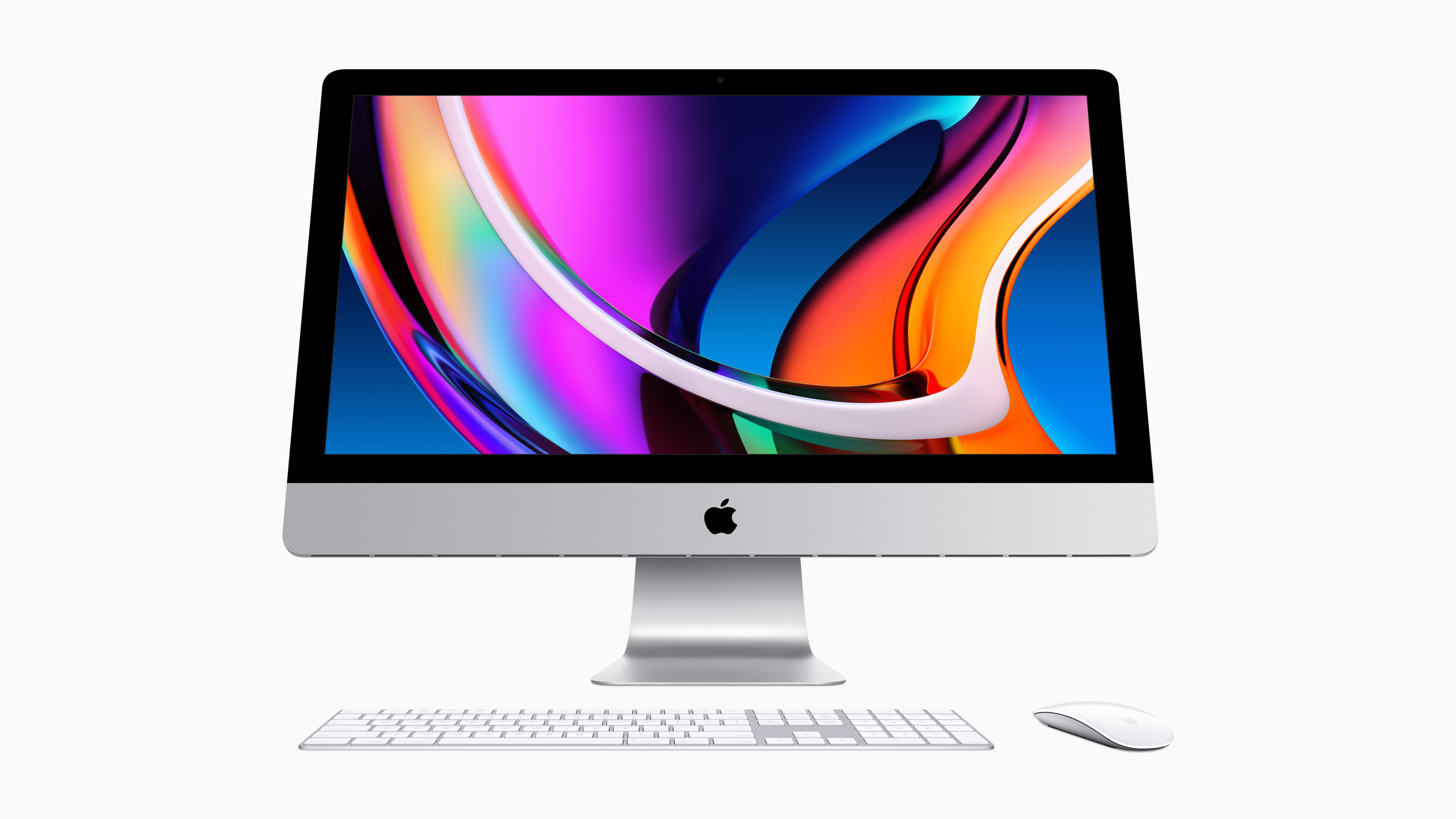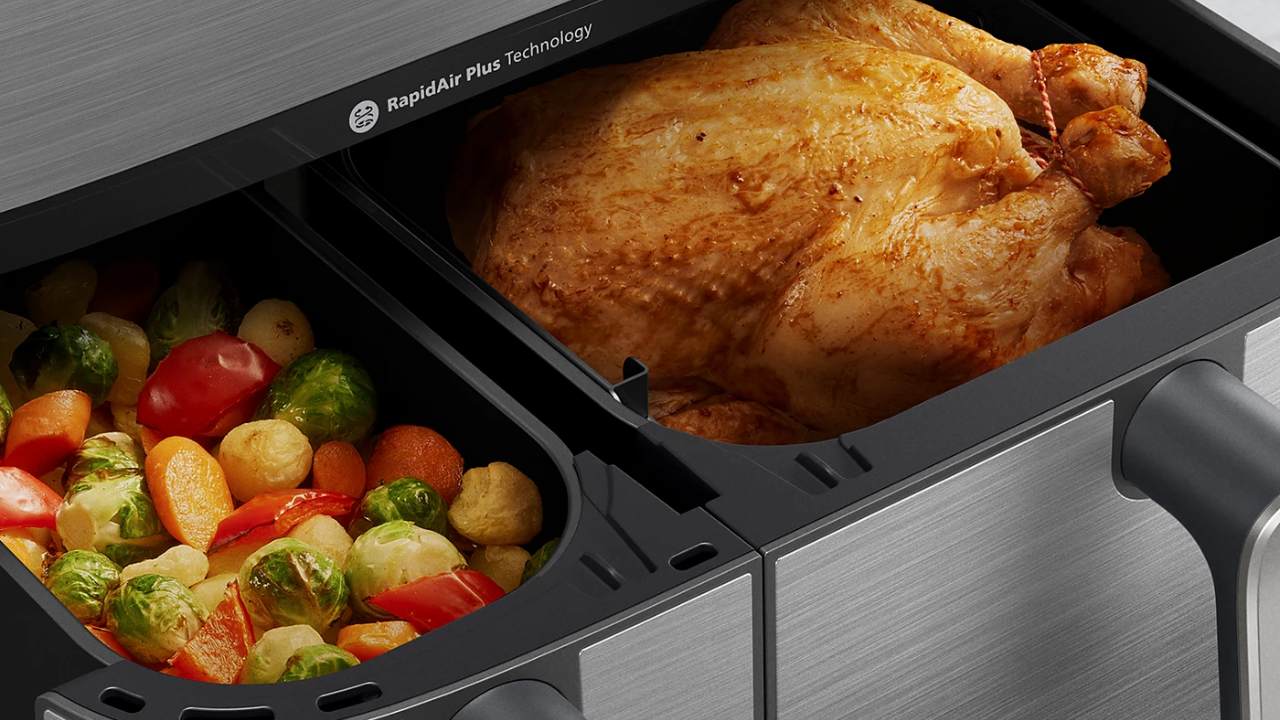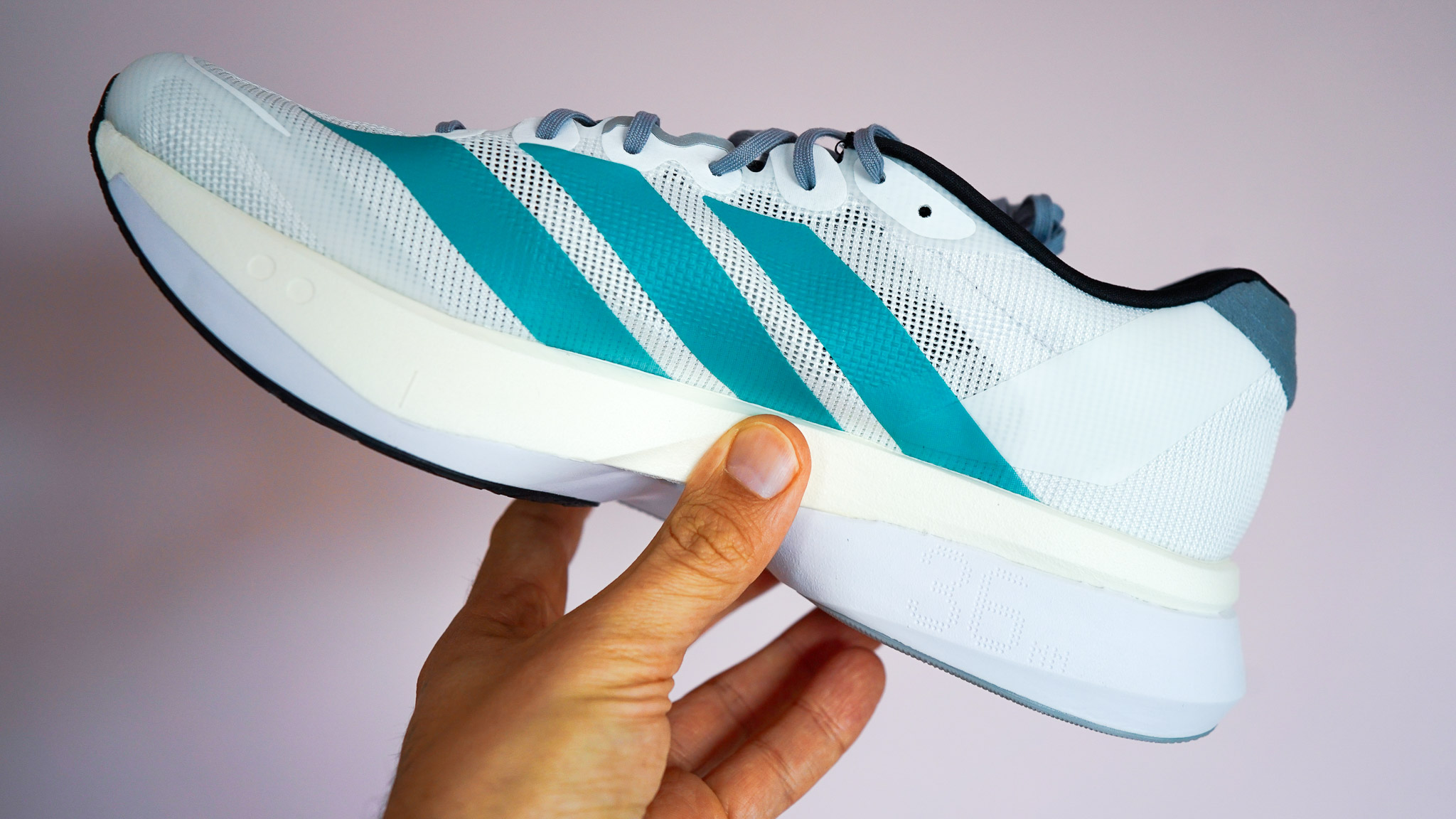

Apple's iconic iMac line-up has just had a big upgrade to the 27-inch 5K model, bringing more powerful 10th-generation Intel processors, more advanced graphics, making SSD storage the standard, improving the Retina screen, and FINALLY adding a 1080p camera to the Mac line-up.
• Browse the new iMac range at Apple UK
• Browse the new iMac range at Apple US
Sadly, the 21.5-inch iMac line-up hasn't had the same kind of love, with the only internal changes being that these models now include SSD storage as standard, meaning those machines are still on processors from several years ago.
The changes to the 27-inch models are all positive, and make it even more flexible for pros. The entry-level 5K 27-inch model has a six-core 3.1GHz processor, with 8GB of RAM, Radeon Pro 5300 with 4GB of GDDR6 memory, and 256GB of storage. This model costs £1,799/$1,799.
For that price, the 8GB of RAM and 256GB of storage seem a bit miserly – especially given that in the UK, the price of every iMac model has increased by £50 from the previous model.
However, for £1,999/$1,999 you can get the next model up, which includes a marginally more powerful processor (six-core at 3.3GHz) and 512GB of storage. All the other specs are the same.
For £2,299/$2,299, you can get the new top-end model, which includes a 3.8GHz eight-core processor for a big step up in power, plus a Radeon Pro 5500 XT with 8GB of VRAM. Again, all other specs remain the same.
Sign up to the T3 newsletter for smarter living straight to your inbox
Get all the latest news, reviews, deals and buying guides on gorgeous tech, home and active products from the T3 experts
As ever, you can configure the iMacs to your liking. You can get a 10-core chip in there, if you like, and improve that 8GB of RAM all the way up to 128GB if you like, though Apple's comedically steep RAM prices apply. It's the same for storage, which can go up to 8TB, though there is the nice option to swap the basic SSD included for a Fusion Drive (which mixes a small SSD with a hard drive) of larger capacity for free.

The new 5K iMacs also have Apple's T2 security chip for drive encryption, and a new 1080p FaceTime camera, which is the first at this resolution on a Mac – we've been complaining about Apple's low-res webcams for years, so this is long overdue. It also has a better mic array, for picking up your voice cleanly.
The 5K Retina display has also been subtly improved through the addition of TrueTone, Apple's tech for adjusting the display to match the ambient light in your room, so it's much easier on the eyes. TrueTone is a genuinely excellent feature, and going back from it feels barbaric, so we're glad it's on nearly all of Apple's computers now.
You can also now have the display covered in Apple's nano-textured glass, which reduces reflections to almost nothing with nanoscale etching of the surface itself. It's great for pros – but is only for pros, given its £500/$500 price.
The 21.5-inch iMac range (which includes one 1080p model and two 4K models) has only been changed to include SSDs as standard (at 256GB, but again can be swapped for 1TB Fusion Drives for free) and to raise the prices in the UK despite no other improvements. No new processors, no TrueTone screen, no improved web cam or mics.
The design of the iMacs remains the same so far, too – we've been waiting on a redesign for the line-up for ages, given that the current look effectively dates back to 2012. Looks like we'll be waiting for a future version of the machine to get a fresh design – probably one that comes with Apple's own processors, whenever that may be.
Perhaps the lack of updates to the smaller iMac is a sign that Apple will use its chips for a lower-cost version of its desktops sooner rather than later.
For now, the 27-inch iMacs update makes it a tempting buy again, but the 21-inch model feels distinctly behind the times.
• Browse the new iMac range at Apple UK
• Browse the new iMac range at Apple US
Matt is T3's former AV and Smart Home Editor (UK), master of all things audiovisual, overseeing our TV, speakers and headphones coverage. He also covered smart home products and large appliances, as well as our toys and games articles. He's can explain both what Dolby Vision IQ is and why the Lego you're building doesn't fit together the way the instructions say, so is truly invaluable. Matt has worked for tech publications for over 10 years, in print and online, including running T3's print magazine and launching its most recent redesign. He's also contributed to a huge number of tech and gaming titles over the years. Say hello if you see him roaming the halls at CES, IFA or Toy Fair. Matt now works for our sister title TechRadar.
-
 The biggest mistake you’re making when cooking Easter lamb in an air fryer
The biggest mistake you’re making when cooking Easter lamb in an air fryerCooking Easter lunch in your air fryer? Don’t make this mistake…
By Bethan Girdler-Maslen
-
 Adidas Adizero Boston 13 is softer, faster, and finally feels like a proper trainer
Adidas Adizero Boston 13 is softer, faster, and finally feels like a proper trainerThe brand quietly fixed everything runners didn’t love about the Boston 12
By Matt Kollat